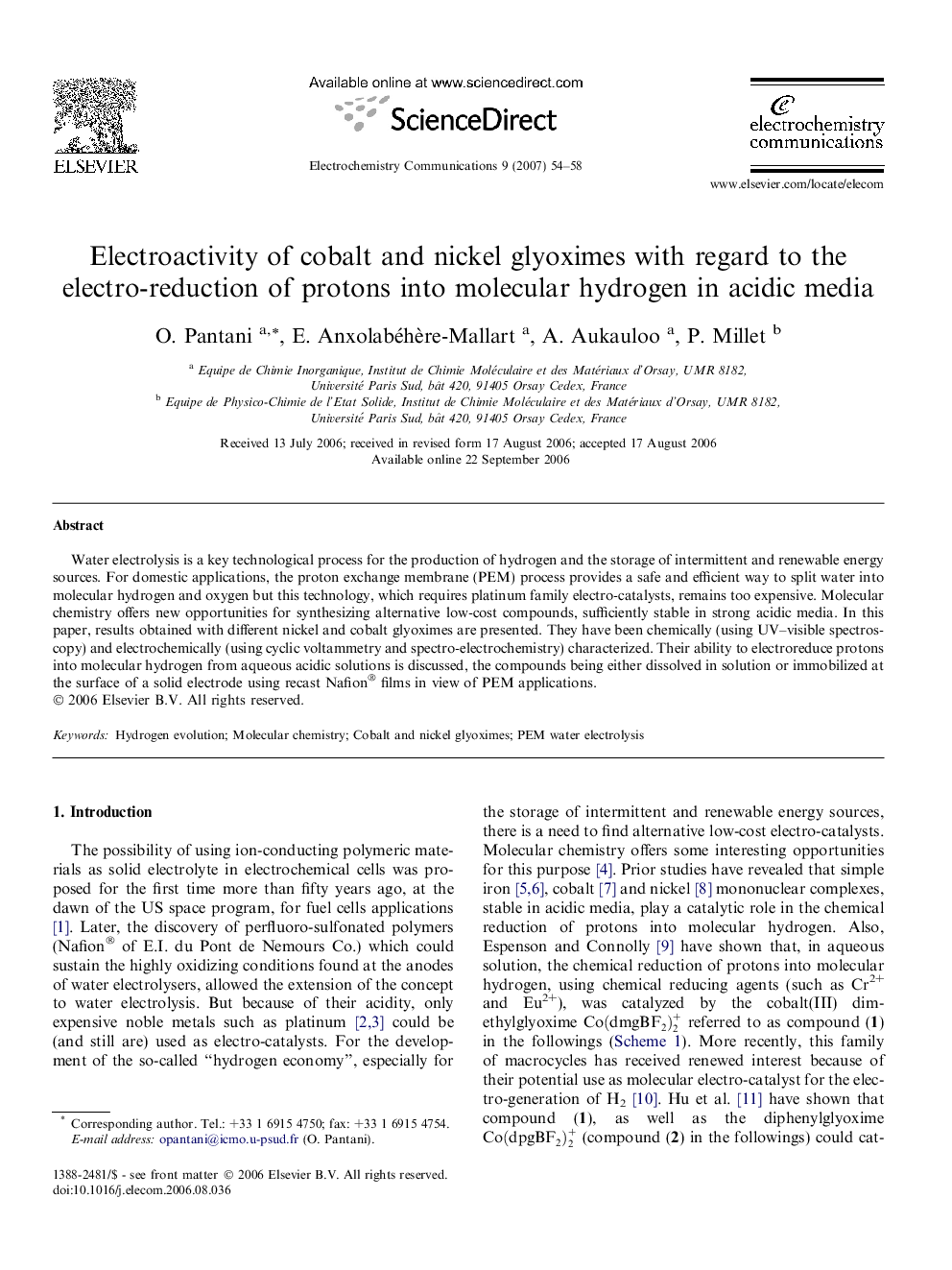| Article ID | Journal | Published Year | Pages | File Type |
|---|---|---|---|---|
| 182282 | Electrochemistry Communications | 2007 | 5 Pages |
Water electrolysis is a key technological process for the production of hydrogen and the storage of intermittent and renewable energy sources. For domestic applications, the proton exchange membrane (PEM) process provides a safe and efficient way to split water into molecular hydrogen and oxygen but this technology, which requires platinum family electro-catalysts, remains too expensive. Molecular chemistry offers new opportunities for synthesizing alternative low-cost compounds, sufficiently stable in strong acidic media. In this paper, results obtained with different nickel and cobalt glyoximes are presented. They have been chemically (using UV–visible spectroscopy) and electrochemically (using cyclic voltammetry and spectro-electrochemistry) characterized. Their ability to electroreduce protons into molecular hydrogen from aqueous acidic solutions is discussed, the compounds being either dissolved in solution or immobilized at the surface of a solid electrode using recast Nafion® films in view of PEM applications.
